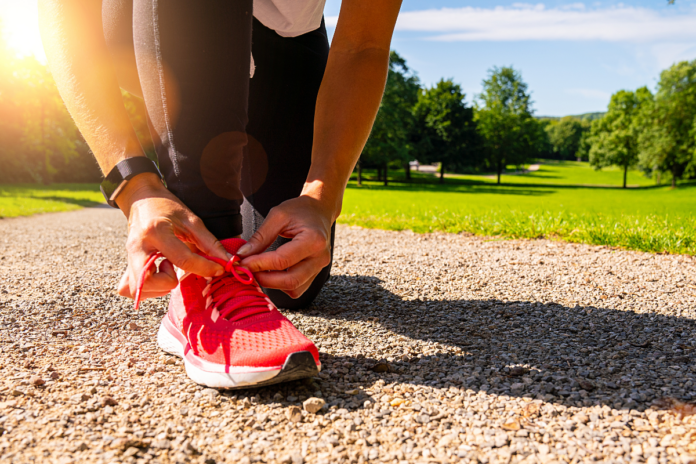A runner’s performance can be significantly influenced by a single yet essential piece of their gear: their running shoes. But what exactly defines the best running shoes? Aside from aspects such as fitting, comfort, and support, breathability is a paramount factor. In this blog, we delve into the significance of breathability in running shoes and explore how it can bolster comfort and athletic performance.
Deciphering the Importance of Breathability in Running Shoes
Foot health and comfort are pivotal to a runner’s performance, and the breathability of running shoes plays a major role here. Shoes with good breathability work wonders in temperature regulation, thereby reducing the risk of overheating. They also diminish the potential for blisters and fungal infections, which can occur due to prolonged exposure to a moist environment.
Indeed, the significance of breathability extends beyond health to comfort. By ensuring the reduction of moisture and sweat, breathable running shoes foster a more pleasant running experience. Furthermore, they are effective in eliminating unpleasant odors, another boon for athletes.
Unraveling the Four Key Aspects of Breathable Running Shoes
By understanding the significance of materials used, evaluating shoe design features, correlating shoe choice with the type of running, and considering the climate and terrain, you’ll be equipped with the knowledge needed to make an informed decision.
- Appraising the Significance of Materials Used – A critical step when you decide to buy running shoes is to comprehend the materials used in their fabrication. The breathability of shoes can significantly differ based on whether they utilize mesh, knitted, or woven fabric technologies.
- Evaluating Shoe Design Features that Augment Breathability – The shoe’s construction and design also impact airflow. Unique ventilation zones, perforations, and low-density materials are just some features that can facilitate breathability.
- Linking the Shoe Choice with the Running Type – The type of running, whether it’s trail, track, or marathon, warrants different breathable running shoes. Each style necessitates a specific level of breathability, based on the exertion involved and the typical running environment.
- Accounting for the Running Locale’s Climate and Terrain – External factors like your running locale’s climate and terrain should influence your shoe selection. Hot climates and difficult terrains may demand a higher degree of breathability.
Effective Tips for Purchasing Breathable Running Shoes
Finding the right pair of breathable running shoes can feel like navigating a maze of options. To help you make an informed decision, here are some effective tips to consider when purchasing breathable running shoes:
Assessing Shoe Quality and Durability
Breathability is just one aspect to consider when evaluating running shoes. It’s essential to assess the overall quality and durability of the shoes as well. Look for well-constructed shoes made from high-quality materials that can withstand the demands of your running routine. Read reviews, seek recommendations from fellow runners, and consider trusted brands known for their commitment to quality.
Aligning Shoe Choice with Running Gear Trends
Staying up-to-date with running gear trends can be exciting, but it’s crucial to ensure that style doesn’t overshadow functionality. Seek a balance between trendy designs and breathability. Stay informed about the latest advancements in breathable shoe technology and choose a pair that aligns with your personal style and preferences. Remember, the best running shoes are those that not only look good but also enhance your performance.
Testing for the Ideal Fit and Personal Comfort
One of the most critical aspects of selecting any pair of running shoes is finding the right fit. Breathability won’t matter if the shoes are uncomfortable or don’t provide the necessary support. Take the time to try on different brands and models, ensuring a snug yet comfortable fit. Pay attention to the width, arch support, and cushioning. Walk or jog around the store to gauge the shoes’ comfort and stability. Additionally, consider any specific foot conditions or requirements you may have and choose shoes that cater to those needs.
Considering Personal Preference and Running Style
Each runner has unique preferences and running styles. Some prefer a minimalist feel, while others favor more cushioning and support. Consider your running style, such as heel striking or forefoot striking, and choose shoes that accommodate your specific needs. Experiment with different shoe types and designs to find what works best for you. Don’t be swayed solely by popular opinion or recommendations; trust your own comfort and preference as the ultimate deciding factor.
Researching and Comparing Different Brands and Models
With countless brands and models available, researching and comparing options can be overwhelming. Take advantage of online resources, reviews, and expert advice to narrow down your choices. Look for brands known for their commitment to breathability and explore specific models that have received positive feedback in this aspect. Be cautious of overly biased reviews and instead focus on common themes and experiences shared by runners.
Considering Budget and Value for Money
While it’s tempting to splurge on the latest running shoe releases, it’s important to consider your budget and the value for money. Expensive doesn’t always mean better, and affordable options can still provide excellent breathability and performance. Set a realistic budget and explore shoes within that range. Remember, investing in a durable and comfortable pair of breathable running shoes is an investment in your running experience and long-term foot health.
Breathability in running shoes isn’t just about comfort, but it is also about safeguarding foot health and enhancing athletic performance. By understanding the materials used, recognizing shoe design features, linking the choice of shoes with the type of running, and considering the climate and terrain, you can make an educated decision. Use these insights to buy running shoes that not only serve your athletic needs but also assure a healthier and more comfortable running experience. Remember, the best running shoes for athletes are ones that combine function, fashion, and fit seamlessly.










